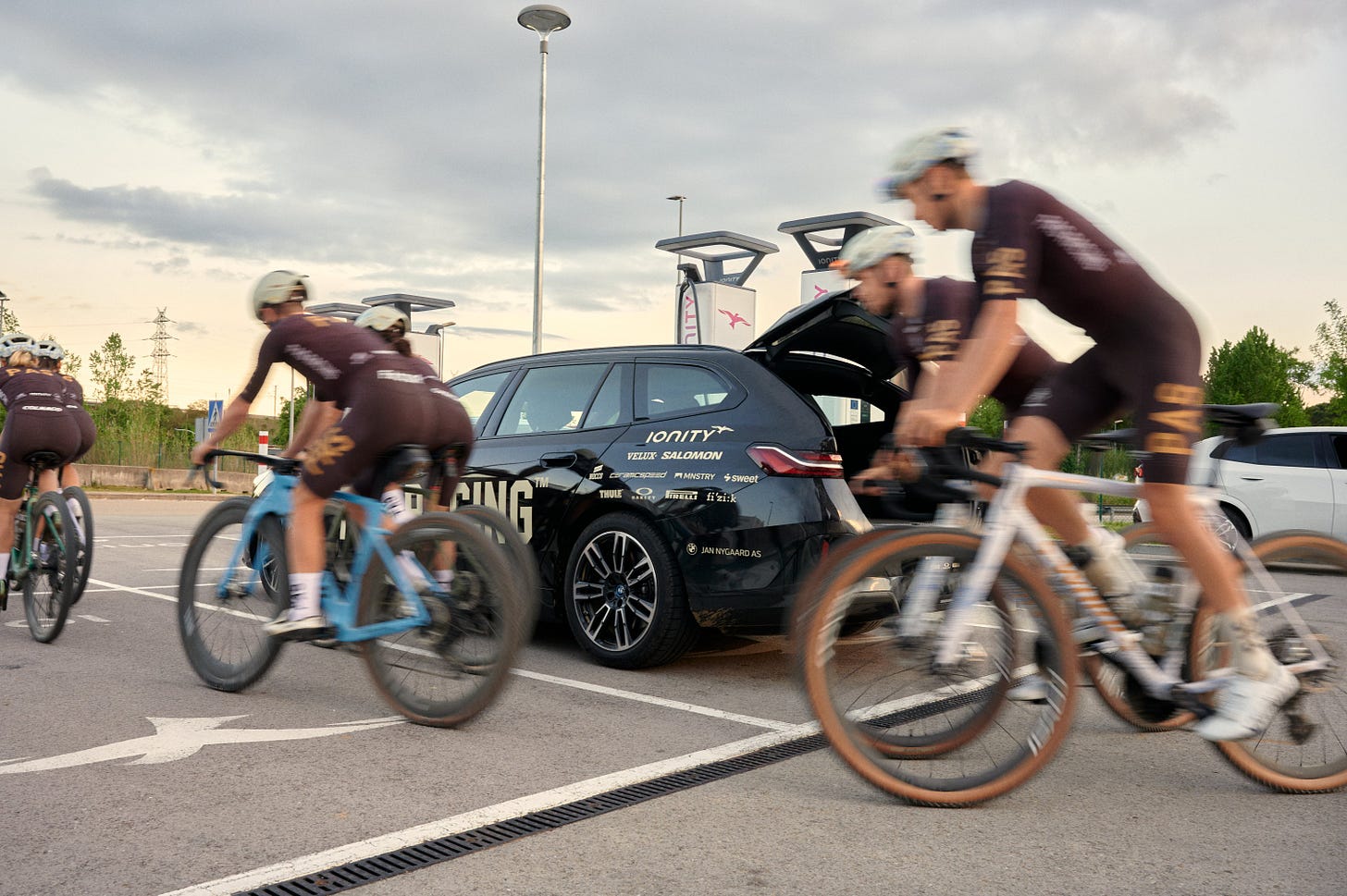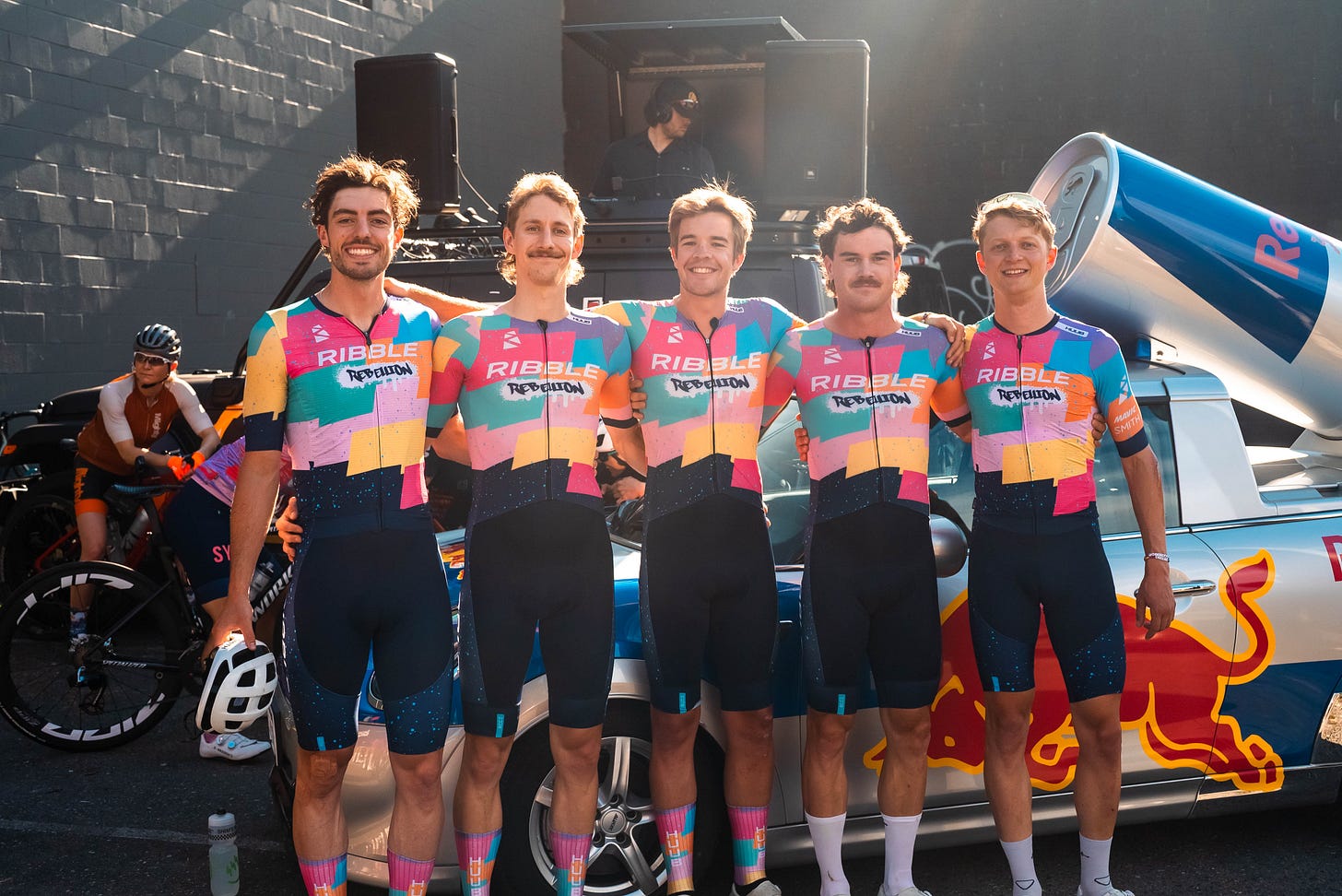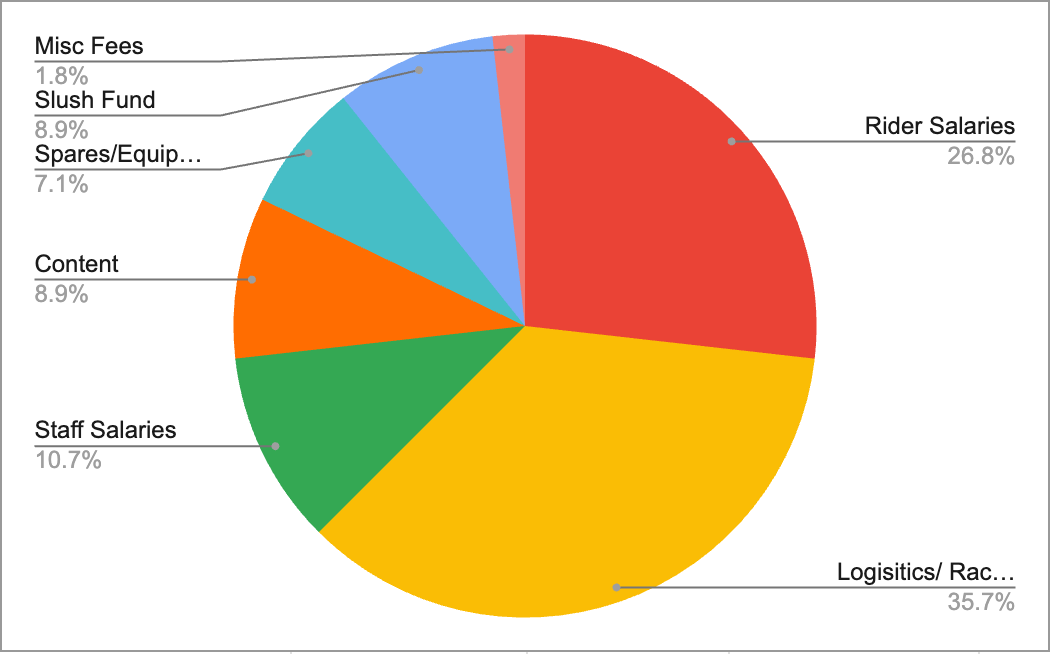The $350,000 Blueprint: Why I want to build another team
What it takes to turn a crazy idea into a professional team.
Year one is $350,000, and a dream.
Then it’s about $1million in year two, and probably $1.2million for year three.
I’m looking at doing another team.
Like, seriously, seriously. Hear me out.
The Vision:
This will be a multi-discipline squad that blends gravel, road, and crits into a year-round programme, built on a media-first, people-first approach that connects fans, riders, and sponsors.
We’ll race to win, but our real edge is in storytelling, creating content that makes people care, and activating across multiple markets - US and Europe - to deliver value far beyond race results. I’ve seen firsthand, from Ribble Rebellion to my privateer career, how engaging communities, riding with locals, and putting people at the centre can have as much an impact as a podium.
The timing is crucial too: gravel is on the brink of a team era, and road is restructuring.
I don’t understand why nobody’s tried to build something that spans gravel and road. The audiences are far closer than the Lifetime Grand Prix’s gravel-MTB mix, and yet no one’s joined the dots.
Call it privateer racing meets Welcome to Wrexham: a brand, a story, and a team people will follow because they feel part of it.
Why Now?
Teams are coming to gravel. With the looming collapse at the bottom of the Pro/World Tour rider market: too many development riders, not enough jobs, teams folding, more talent will cross over.
That means fields are going to get deeper, and races are going to become even harder to control.
At Unbound this year, the early break went, and the favourites got annoyed that no one would work with them. But why would you? They’re competitors, not teammates.
Teammates are coming. It’s inevitable.
The question is whether gravel itself can sustain teams. I don’t know the answer to that, but I don’t think so. There are only a handful of gravel races in the world - say five - that ripple into the mainstream cycling media. Gravel racing (not gravel riding) also has a fan conundrum, but that’s an article for another day.

Below the WorldTour, a year-round road calendar doesn’t stack up either. There are a few crown-jewel events, but not enough to justify a full road programme. Put the two together, though - mix in a few major city crits too - and suddenly you have a legitimate, year-long, multi-discipline calendar.
It spans markets, crosses territories, and delivers serious value to sponsors. Plus, the content potential is enormous.
The best of all worlds.
Why me?
This isn’t just a team idea to prolong my race career. It’s the team I wish existed - it’s the team I think the sport needs. A way to combine everything I love about racing with everything I’ve learned about storytelling and connecting with people. I’ve been on both sides: the scrappy privateer chasing start lines, and the guy building a team that made people care. This is my chance to bring it all together.
To be a pro at the minute, you have to stick in a box. I want that to change.
I ran Rebellion. We were a road racing team based out of the UK that took the US by storm last year. A lot of this comes from what we built and learned..
Going to mid-week crits was just as important as going to National Series races. Pre riding with locals in the park was as important as podiums. We focussed the team on people, not metrics. Brands need to reach people, not just numbers on a screen.
I’ve run my own privateer calendar for three years, I understand the basics of the calendars and what’s needed financially. Plus my media side too. I’ve always been told that I think too much to be a bike racer, in this case, that’d actually be a good thing. I’ve worked on the brand side, I’ve worked on the media side, I'm an athlete too.
I get it, and well, it’s got to be somebody hasn’t it?
The money side
While I’m beyond fed up of watching brands spend tens, if not hundreds of thousands of dollars to do ‘mid’ things, I’ll be the first to admit that business is hard.
Building a team isn’t that different from building my own racing budget. You map the calendar, work out where to race, calculate logistics, content, salaries. The difference? The number is a lot bigger.
To execute year one properly requires $350,000. That figure brings a meaningful MVP to market substantial enough to generate visibility and proof of concept, while lean enough to validate the model before scaling.
Where do you start raising that number? I’ve built a good network over the years, but I don’t have a billionaire mate I can call for a half million quid. It’s going to take networking, soft pitching, persistence, and luck. Like many things in life, I think the right time-right place is going to be essential.
And raising the money is only the start. You still need the right riders, the right content, the right name. There’s a long road between having a plan and having a functioning race team.
Shoot for the sun
I’ll be real, it’s a balancing act. Planning my 2026 season as a privateer while looking at something bigger too. I’ve written about wanting to do another team multiple times before, but these past few months have been the first time that I’ve sat down and pulled the numbers together.
By 2027 at the latest, I’ll have put a multi-discipline team together, or I’ll have exhausted every contact, every play, and every trick in my book.
A wise man once told me to shoot for the sun. This Substack is where that journey starts.
If you see yourself in that vision, or feel like you know anyone who would. My inbox is open.
I’ve added a paid subscription and a ‘Buy Me A Coffee’ link to this post. As the year progresses, I’m planning on building this blog and putting out articles which I’ve always wanted to write but, for whatever reason, haven’t wanted to pitch. Your contributions allow me to do that.
https://www.buymeacoffee.com/joelaverick
The following brands are racing partners of mine which allow me to do cool stuff.




I used to manage motorsports and eventually some cycling sponsorships.
I would suggest building a riding club. Give all the members endemic discounts. Focus on growing it.
Sponsors would be more interested in a broad amateur reach coupled with pro level visibility.
Like people have said Swatt Club with personality figures akin to a Holy Spirit of Gravel comedian or a VCletsgetit influencer and have fans buy into an easygoing brand but the best members are competitive.